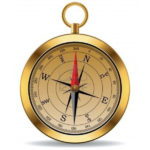A large number of sensors that take in and translate data from the real world into electrical signals are analog sensors, and if listed as digital sensors, it’s because they have integrated analog-to-digital converters. Traditionally, wired sensors have altered an electrical current in response to environmental conditions. Sensors range from familiar examples like photodiodes and photomultipliers that produce current when exposed to electromagnetic radiation, to submersible pressure transducers that are used to measure fluid levels. The standard current signal in use today for industrial or environmental sensors, typically wired to Programmable Logic Controllers (PLCs) is 4-20mA, with 4mA representing zero percent (0%) of the measured value and 20mA representing 100 percent (100%) of the measured value.

Other current ranges have been historically used for current-loop transmitters, but they have in common a ratio of 1:5 in mA, or a 20% bias. For example, before the transistor, 10-50 mA current loops were common. A 10mA “live zero” was used as it was the lowest at which instruments based on magnetic amplifiers could operate, and 50 mA was used to maintain the 1:5 ratio. (Live zero is measured as zero input even though the actual signal is 4mA, not 0mA. A dead zero would be 0mA, at which point you have an open circuit.) When transistors came into wide use, they would reliably operate at a (then) low value of 4mA, so the industry standard shifted to 4 – 20mA (maintaining the 1:5 mA ratio). The standard for 4-20mA (ISA SP50) was originally published in 1966.
Current signals are often used in sensors because the current response is usually more linear than the voltage response. Current signals also typically provide a low impedance for sensors, with the benefit of better immunity to noise. One practical consideration is that current signals can extend much further than voltage signals, allowing robust signal wire lengths of up to 1,000 meters.
Power supply voltages used with 4-20 mA DC loops vary (9, 12, 24 VDC, etc.) depending on the application. However, the power supply needs to be at a 10% higher potential than the voltage drop of the combined components in the circuit (i.e., transmitter, receiver, and wire). Most 4-20mA loops use two wires, but there are also three- and four-wire configurations that separate a positive supply from the output connection. The components of a 4-20mA loop include 1) a sensor, 2) a transmitter, 3) a power source, 4) a circuit/loop (i.e. wiring), and 5) a receiver.
There are pros and cons to using a 4-20mA current loop. The pros are that the 4-20 mA current loop is the dominant industry standard, is better for long distances, is the simplest to connect and configure, uses less wiring than similar systems, and is very easy to troubleshoot for common problems like broken wires. The disadvantages of using 4-20mA for an active sensor input loop are that current loops can transmit only one process signal, which requires multiple loops when there are numerous process variables that need to be transmitted. Furthermore, using multiple loops can lead to ground loops problems if the individual loops are not isolated.
One other advantage of 4-20mA current loops is safety. Even if the power supply is 24 volts, shock isn’t a danger since the current is low (P=VI). Also, the 4-20mA current loop is intrinsically safe for hazardous areas that may include dangerous levels of dust or vapor because the low power consumption does not cause combustion if normal operating or fault conditions are in play.
Of course, if the use of wireless sensors continues to grow, the 4-20mA input loop distance of 1,000 meters will not be as impressive as it was in the 1960s. However, the old-fashioned 4-20mA sensor loop is inherently immune to hacking via the internet and will always be more reliable for real-time performance than wireless sensors.





